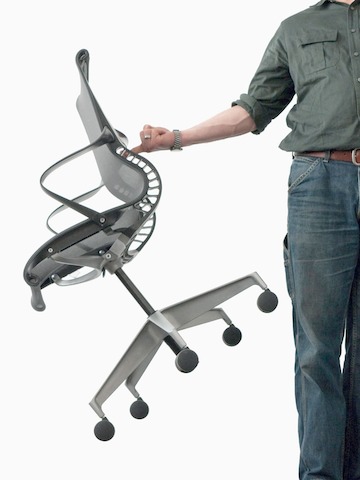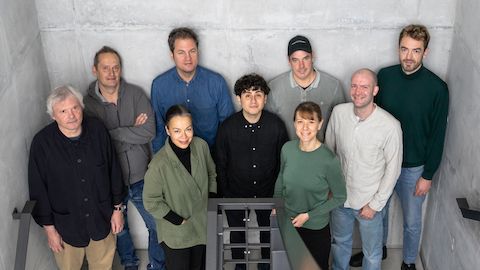
Meticulous prototyping helped Setu become what it is today.
The typical task chair design story goes like this: start with an idea and shape it into the world around you.
But in designing Setu, the Berlin-based Studio 7.5 flipped the script, letting the world around us shape the chair. It’s inspiration through observation. Together with Studio 7.5, we combined design expertise with manufacturing excellence and studied, learned, asked questions, and then relearned.
Setu was painstakingly shaped and reshaped to ensure that every piece falls into the right place to deliver the desired comfort and functionality. The designers do all their prototyping in-house and estimates they built upwards of 35 fully functional prototypes before even sharing the concept with Herman Miller.
“You don’t get the feedback from the computer,” said Roland Zwick, who helms 7.5 with its founders, his sister Carola Zwick and Burkhard Schmitz.
With Setu, 7.5 wanted every molecule to truly count. “The environmental aspect is inherent, and it’s part of our job to only design products that don’t use up too much energy and don’t use too much material,” Carola says. “We really tried hard to shave Setu down to the absolute minimum.”
Inspiration from Studio 7.5’s experience designing Cosm and Zeph led the design studio to revisit Setu, applying Cosm’s dipped-in-color to add a more sculptural element to Setu’s already beautiful silhouette. The studio found warmer tones in building the color palette for Zeph, leading to the addition of Cocoa on Setu’s new suspension.
As Studio 7.5 continues to evolve, so does the way we work, and it takes different thinking to support the changes. That’s why we created Setu, a small chair with a big impact that proves that sometimes less is really more.


